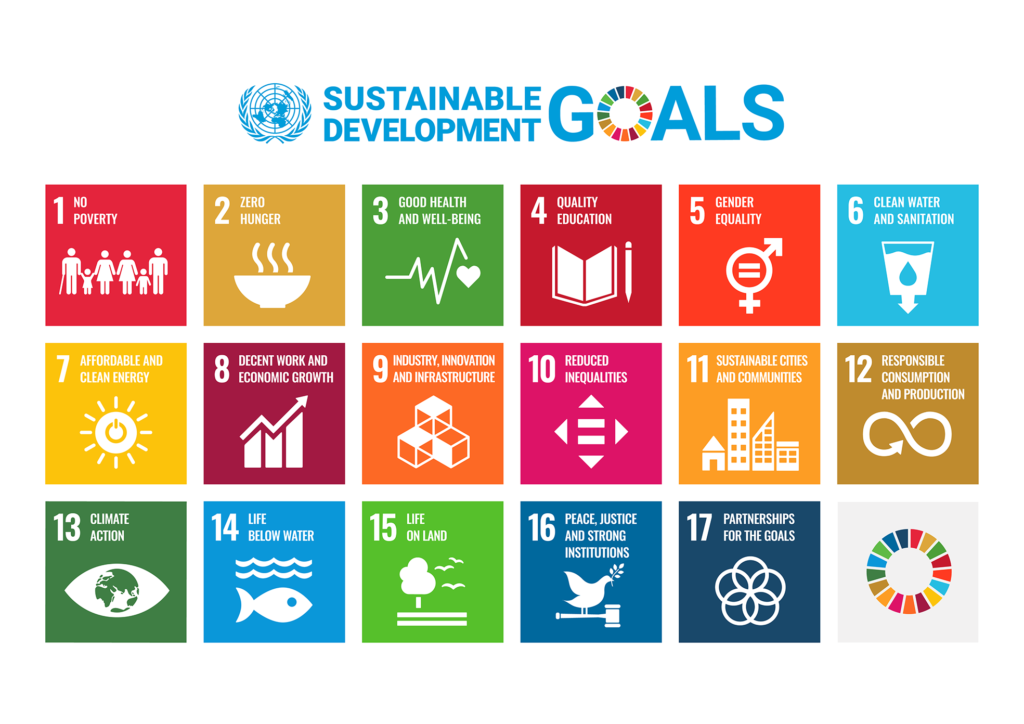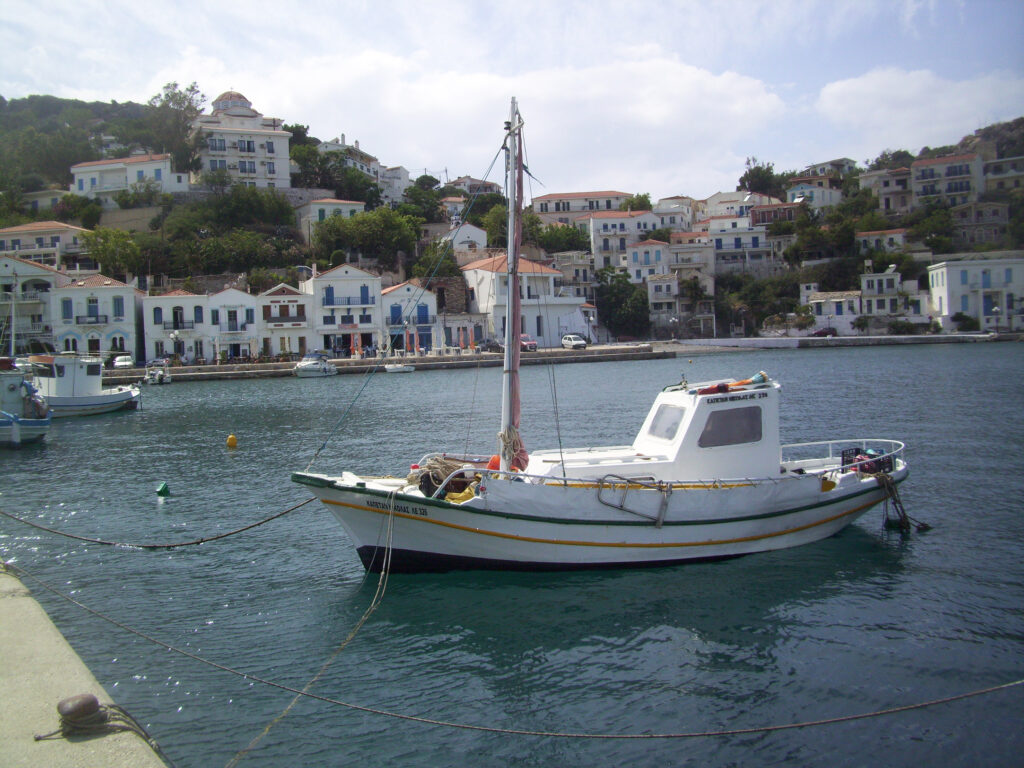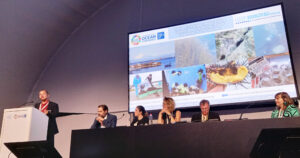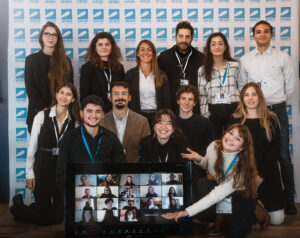Since the middle of the 20th century scientists have observed rapid changes in the Earth’s climate in every region of the planet and across the whole climate system. Today it is known as a fact that human activities have warmed up the atmosphere, oceans and land causing widespread and rapid changes across the planet. This global warming, which is estimated to approximately 1.1 degrees Celsius since the period between 1850 and 1900, is largely the result of burning fossil fuels and the emissions of greenhouse gases. The rise in temperature is expected to accelerate reaching or exceeding 1.5 degrees Celsius over the next 20 years, causing unprecedented repercussions to the natural environment as well as all the living organisms that inhabit it.
Despite these distressing projections, the latest reports on climate change by the Intergovernmental Panel on Climate Change, published in 2021 and 2022, have pointed out that human actions still have the potential to determine the future course of the climate and the planet. Immediate, rapid, and large-scale reductions of greenhouse gas emissions could limit the earth’s warming to 1.5 or 2 degrees Celsius, which would allow the planet to possibly recover. Of course, this effort would improve some climate change effects quite quickly, but it would take several decades to achieve some sort of stabilization of the global temperatures, the extreme weather effects and the impacts on the various ecosystems. Therefore, it has been established that both climate action as well as regional adaptation and mitigation strategies will be required for human societies in the near future.
The steps that human societies should undertake to fight climate change and build a climate resilient future for everyone in the planet are clearly expressed in the 17 Sustainable Development Goals (SDGs) of the United Nations. The 2030 Agenda for Sustainable Development, which was adopted by all United Nations Member States in 2015, promotes peace and prosperity for people and the planet, now and in the future, by ending poverty and other deprivations, improving health and education, reducing inequality, and spurring economic growth – all while tackling climate change and working to preserve our oceans and forests. The UN SDGs are interested in both humans and the natural environment. The successful implementation of this sustainable development plan would require an effort that involved active engagement as well as change of attitudes and behaviours by policymakers, stakeholders, societies, social groups, and individuals.

Involving cultural heritage in the climate action efforts and the pursuit of sustainability has been considered quite important. The report ‘Future of Our Pasts: Engaging Cultural Heritage in Climate Action’ released in 2019 by the International Council on Monuments and Sites (ICOMOS) explained clearly how the global heritage community can work to help build climate resilience and meet the goals of the 2015 Paris Agreement. More recently, the Climate Heritage Network (2021) released a manifesto on ‘Accelerating Climate Action through the Power of Arts, Culture and Heritage’, as part of the UN Climate Conference (COP26) held in Glasgow in November 2021. In this manifesto it was declared that people, their cultures, and the natural and cultural heritage of the earth are profoundly at risk from human-caused climate change and the climate inaction that is deepening the unfolding climate crisis. It also reaffirmed the immense power of arts, culture, and heritage to inspire climate action and adaptation in order to enable a just transition to low carbon, climate resilient futures. This manifesto and the participants of the Climate Heritage Network highlight the significance of human-centred solutions as well as cultural heritage related actors and actions in the mobilization on climate change issues.
Despite the close relevance of cultural heritage to climate action, archaeologists have been among those whose talents have not yet been largely mobilised on climate change issues. R. Van de Noort (2011) was one of the first who perceived the idea of ‘climate change archaeology’ in his article ‘Conceptualising climate change archaeology’ that was published in the journal Antiquity. This theoretical framework interconnects people and communities entirely within the landscape they inhabit and recognises that climate change has direct impacts on humans, leading indirectly to adaptations within societies to climate and environmental change. This concept highlights the potential benefits of including archaeological research to modern climate change debates and strategies.
The important contribution of archaeology in handling the climate emergency has been highlighted more recently by H. Fluck (2022) in her ‘Letter to a young archaeologist’ published on the website of the Council for British Archaeology. In this letter Fluck explains to future archaeologists that ‘as an archaeologist you won’t be rich, you are unlikely to be famous, but you can help to save the planet’. This is due to several ‘superpowers’ that archaeologists have, such as storytelling, time travel, evidence of how people change the environment, and evidence of how people can live without fossil fuels. All these aspects make the field of archaeology a significant tool that could assist societies to materialise and implement the sustainability goals and build climate resilience for the present and future human generations.
More specifically maritime archaeology, the field of archaeology that studies sites, material remains, human activities and interactions related to aquatic environments, has been noted as an academic discipline with huge potential to contribute to the current climate action and sustainability initiatives, especially due to its multi-disciplinary nature and human-scale approach. Even though the relevance of maritime archaeology to sustainable development has not been clearly stated in any international agreements, the significance of maritime archaeological research in handling the climate emergency has been emphasized by the recognition of ocean cultural heritage and ocean literacy programmes as integral parts for implementing the 2021-2030 UN Decade of Ocean Science for Sustainable Development, which focuses mainly on SDG 14 ‘Life below Water’. In this setting ocean, marine or maritime cultural heritage is thought to be representing all kinds of human interactions with the oceans and seas, including both tangible cultural heritage remains, such as shipwrecks, submerged sites, coastal archaeology, ports, harbours, maritime ecologies, geology, and intangible elements, such as cultural practices, artistic and linguistic expressions, local skills, traditional and historical knowledge, all of which are subjects of maritime archaeological research.
The work conducted by the Ocean Decade Heritage Network (ODHN) since 2019 demonstrates the relevance of maritime archaeological research to the implementation of the 2021-2030 UN Decade of Ocean Science for Sustainable Development and the importance of incorporating maritime cultural heritage into the sustainable development discussions.
Several recent maritime archaeological projects, such as SCAPE, Changing Minds Changing Coasts by CITiZAN and CHERISH highlight the undeniable interconnection between maritime archaeology, maritime cultural heritage and climate change. By researching various aspects of human interactions with aquatic environments over time and space, maritime archaeological research can, firstly, provide rich datasets and deep knowledge of the human-environmental past with examples of palaeoclimatological or paleoenvironmental data as well as cases of human risk, adaptation, and resilience. At a second level maritime archaeology and the associated knowledge on site formation processes and site preservation methods can contribute to the planning, protection and the mitigation strategies for land areas expected to deal with extreme flooding or with the submersion of sites due to the expected sea-level rise. Additionally, the role of maritime archaeologists in identifying risks, as well as managing, protecting, and preserving cultural heritage assets along with the natural environment in maritime and inland sites, has been considered vital at the time of the climate crisis, because it implements the SDG target 11.4, which recommends to ‘strengthen efforts to protect and safeguard the world’s cultural and natural heritage’.
Moreover, maritime archaeological research on local, indigenous, and traditional knowledge could significantly inform policymakers on ecological information that could contribute to modern attempts of climate adaptation by balancing past experiences with new ways to cope. This aspect is particularly important for maritime regions, given the vulnerability of local and indigenous communities living in coastal areas and islands that are directly threatened by climate change impacts and related hazards. Finally, various maritime archaeological projects have shown that archaeological outreach has the power to engage with the public and create awareness on both cultural and natural heritage subjects. Therefore, heritage sites can serve as opportunities for climate communication and education, to help people understand the climate crisis, past responses to changing climate conditions, as well as the need to adapt and achieve climate resilient societies.

The interdisciplinary project ‘Re-imagining the use of traditional watercraft in the Aegean Sea for a sustainable environment and economy’, taking place at the University of Helsinki between 2021 and 2024 with funding by the Kone Foundation, attempts to explore the potential of maritime archaeological research for the sustainable development and climate resilience prospects of a maritime region in the Eastern Mediterranean that has been affected by human-induced environmental deterioration and climate change.
The Aegean Sea, in Greece, as many other maritime regions around the world, saw the loss of non-polluting traditional watercraft made of wood and propelled by sails or rowing in the course of the 19th, 20th and 21st centuries. This concurred with a transition to metal or fibreglass motorboats and the introduction of large-scale fishing trawlers and transport ships. This shift resulted in the loss of traditional maritime jobs, the development of touristic rather than maritime economies in most island and coastal regions and the destruction of the marine environment from the extensive use of large-scale polluting fisheries, as well as cargo and passenger ships.
Today, though, in the face of the climate crisis that we are all facing and with our current knowledge of the environmental impacts of modern shipping, fishing and maritime transport, small-scale and non-polluting local watercraft have been brought back to the foreground as a solution for the establishment of more sustainable economies in coastal and island regions. Despite past misconceptions that traditional boats are environmentally unsustainable and should be considered just objects of beauty, the adoption of traditional, or even historical, non-fuel watercraft as an attempt to reduce carbon emissions has been trialled extensively in many places around the world with great success. Initiatives like the work by Fairtransport, Ecoclipper and Fair Ferry have provided evidence that sail cargo and wind-driven travel and transport constitutes a sustainable and ethical business model that could replace a lot of polluting and destructive modern shipping activities.
If we look more closely at the Aegean Sea, in Greece, S. Rassia and T. Tsikis, in their 2020 article ‘Wooden Boats and our “Smart Sea Energy Gene”: an Evolutionary Approach to Naval Architecture and Marine Engineering through History, Optimization, Renewable Energy, and Sustainability’, discussed the potential of traditional wooden boats in Greece for providing a low-carbon energy efficient solution to the European and international sustainability agenda. Moreover, Aegean Sails with their initiatives ‘Aegean Cargo Sailing’ and ‘Sailmed’ have been promoting since 2018 wind-driven transportation of products and passengers by sailboat through the revival of traditional commercial sea routes in the Aegean islands. This work has received positive responses by the locals and especially by local producers, who choose to transport their products through more sustainable means.

By recording and preserving the traditional watercraft of the Aegean Sea, as well the associated intangible cultural heritage, and by researching the response and adaptability of the local maritime populations through archaeological and ethnographic perspectives, the project ‘Re-imagining the use of traditional watercraft in the Aegean Sea for a sustainable environment and economy’ attempts to integrate maritime archaeological research into climate change debates of the region.
More specifically, by documenting historically and archaeologically the changes in the use of traditional watercraft in the Aegean Sea, and particularly the shift from wooden non-fuel boats to polluting steam and motorboats as it occurred during the 19th, 20th and 21st centuries, this research can help in protecting and safeguarding the local cultural heritage as described in SDG Target 11.4. This effort would significantly strengthen the identities of local coastal and island communities while creating stronger cultural awareness. This is particularly important due to the extensive destruction of traditional Aegean boats in Greece due to various financial and legislative obstacles that independent boat-owners and fishermen have been facing in the last few decades, a problem which has been recorded by the Traditional Boat Association of Greece.
At a second level, by documenting the socio-political circumstances that led to the shift in watercraft, as well as the impact that this change had on coastal communities, local economies and the marine environment of the Aegean Sea, the wider cultural context of this change can be better understood. With this knowledge in mind, it will be possible to inform on sustainable solutions that protect marine ecosystems, as suggested in SDG Targets 14.2 and 14.5, and provide a low-carbon energy efficient solution for Aegean maritime transport in line with SDG Target 7.a. Additionally, it will be possible to recommend sustainable solutions to protect island and coastal communities from climate change effects, as described in SDG Targets 11.5 and 11.b.
Finally, by assessing the possibility of a successful re-introduction of traditional non-polluting watercraft in the Aegean Sea, the social impact, the reaction of the local communities, as well as the possible outcomes for the creation of sustainable local economies that preserve the natural marine environment, it will be possible to suggest strategies that bridge the gap between modern scientific knowledge and traditional maritime knowledge. This research data can inform on the optimal ways of developing sustainable fishing and maritime transport systems, managing effectively the marine and coastal resources (SDG Target 12.2), while improving local people’s livelihoods. Hence, it will be possible to support small-scale enterprises and producers, as described in SDG Targets 2.3, 14.4 and 14.b, and promote the development of sustainable tourism (SDG Targets 8.9, 12.b and 14.7).
Overall, maritime archaeological research and maritime cultural heritage, both tangible and intangible, can be climate action assets, as well as a driver of sustainability that could help develop human-centred solutions and build climate resilience for the present and future human generations. Given the reduced involvement of humanities researchers in climate action initiatives, the world could use more archaeological expertise, perspectives, and methodologies for the implementation of the sustainable development goals and the materialisation of climate adaptation strategies. Since the climate crisis is a human-induced problem, humanists, and more specifically archaeologists, with their understanding of how people make sense of their world, should be more actively integrated in climate change research initiatives.



